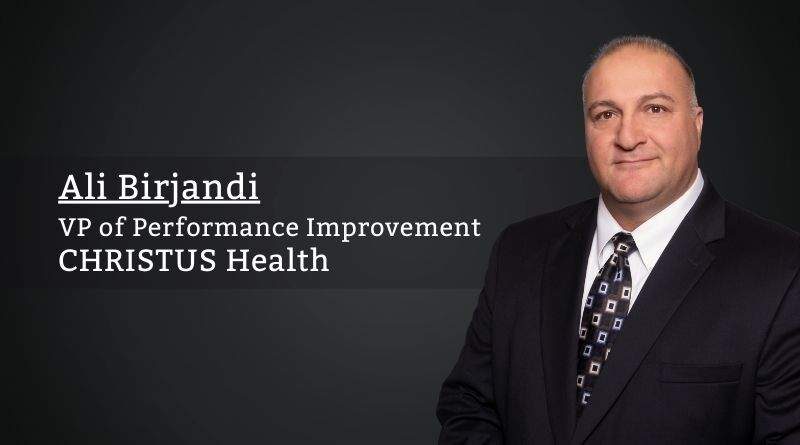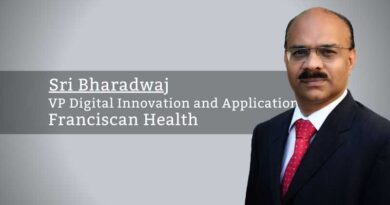The Next Generation of Decision Support Tools and Systems in Healthcare
By Ali Birjandi, VP of Performance Improvement, CHRISTUS Health
In Performance Improvement, we are always on the hunt to find faster, better, and cheaper ways to produce goods and services. To this end, assessing and reengineering operations to optimize inputs and maximize outputs is a never-ending cycle. Throughout history, true reengineering has had its biggest advances through new innovations and technologies. These advancements have come through automation of processes, treatment in the human condition, and access to information for management.
In the last 25 years, we have witnessed a tremendous revolution in adopting new technology in the US healthcare system. We have seen clinical and administrative functions take big steps towards new clinical treatments and away from paper for day-to-day operations. It is not uncommon to see hospitals using hundreds of different applications to manage everything from the patient visit to the systems themselves.
As technology continues to permutate into all aspects of healthcare, it represents a tremendous opportunity for operators to access new and better information faster than ever before.
A byproduct of finally arriving at the golden age of technology in healthcare is the massive amounts of data generated as part of normal daily operations. As technology continues to permutate into all aspects of healthcare, it represents a tremendous opportunity for operators to access new and better information faster than ever before.
As the rate of change continues to increase in the healthcare environment, organizations with the ability to leverage their technology to provide information at the fingertips of their operators will react faster and make better decisions than their competition. Below are the top 4 enhancements to existing decision support functions that can propel your organization to the next level.
Connecting Voice Recognition with Reporting Tools
It is not uncommon for operators to routinely call for ad hoc reports through the Performance Improvement office. This process is so routine that intake forms help nail down the input and output parameters to match expectations. Often analysts feel like the middleman converting a verbal request into a graphical report. If a system were able to walk through the same logic as the analyst, the process could be automated.
Advanced Voice Recognition (VR) technology such as Dragon are used extensively in healthcare today. Additionally, there are advanced reporting systems that can easily manipulate data to create Ad Hoc reports. Connecting the two technologies would not only save time, money, and FTE’s, but it would give operators faster access to information for decision making.
Robust Alert Systems
We have seen the journey that decision support systems and tools have taken in healthcare, from simple financial statements to real-time operational reports. In the next generation of Decision Support Systems and tools, alerting mechanisms will be an integral part of the system design. This includes identifying upper and lower controls for data sets, preferred modes of communication, and flexible recipient groups.
Traditional modes of communication through e-mail are increasingly becoming outdated. Although automated e-mails have been a great step towards providing leaders with information at their fingertips, increasingly, those e-mails are getting lost in the hundreds of emails executives receive daily. Today many organizations manually transfer data from reports to texts for senior leadership 24/7.
Because of the massive amount of data sets the c-suite typically monitors daily, it is not just critical to identify key performance indicators, but to identify when it requires attention. By creating upper and lower controls, future systems will know when a specific KPI merits a communication to the appropriate leader. Alert systems that do the legwork for leaders in identifying when it requires attention can save time and energy the leaders sorely need today to run day-to-day operations.
Leveraging Artificial Intelligence (AI)
With recent advancements in Artificial Intelligence, there is a whole new world of opportunities hidden in the ocean of data generated daily throughout the healthcare industry. Most of this information will never be analyzed since it’s humanly impossible to find the needle in this haystack. But hidden in these data bytes information can potentially save lives or create a bigger bottom line. Identifying correlations between perceived unrelated data sets can have a powerful impact in places we never conceived.
It was fascinating to read how a 24-hour retail store business analyst found a correlation between diapers and beer after sunset. He randomly discovered that men coming in at night to pick up diapers, also picked up a six pack of beer on the way out. By placing the diapers next to the beer, sales increased significantly. Healthcare also has these opportunities across operational, quality, patient experience, and financial data.
Artificial intelligence is becoming more powerful every year. Leveraging AI technology to find relationships to support operational decisions is an untapped opportunity in the healthcare sector.
Harvesting data in disparate systems
It is prevalent to see large healthcare facilities use hundreds of different applications in daily operations. Because of this reality, it is a monumental task to run reports across traditional functional silos to fully picture the patient experience within the healthcare continuum.
Creating decision support information in the current environment is both labor-intensive and expensive to manage. For meaningful reports, patient data has to be accessed and linked across disparate systems. This data must be normalized, extracted, and migrated into the right format to use.
Just as we can plug any electronic device into a standard wall outlet, future data and databases will be standardized. Accessing data for extraction and utilization will be easy to do with no additional training across multiple database platforms. Words like proprietary data will be a thing of the past.
Healthcare today is under stress from competition, consumerism, government regulations, and even an international pandemic. As operators look to technology to provide the edge, information is increasingly a key component for surviving the next decade. Through partnerships with innovative companies, healthcare operators can transition into a new level of performance.



